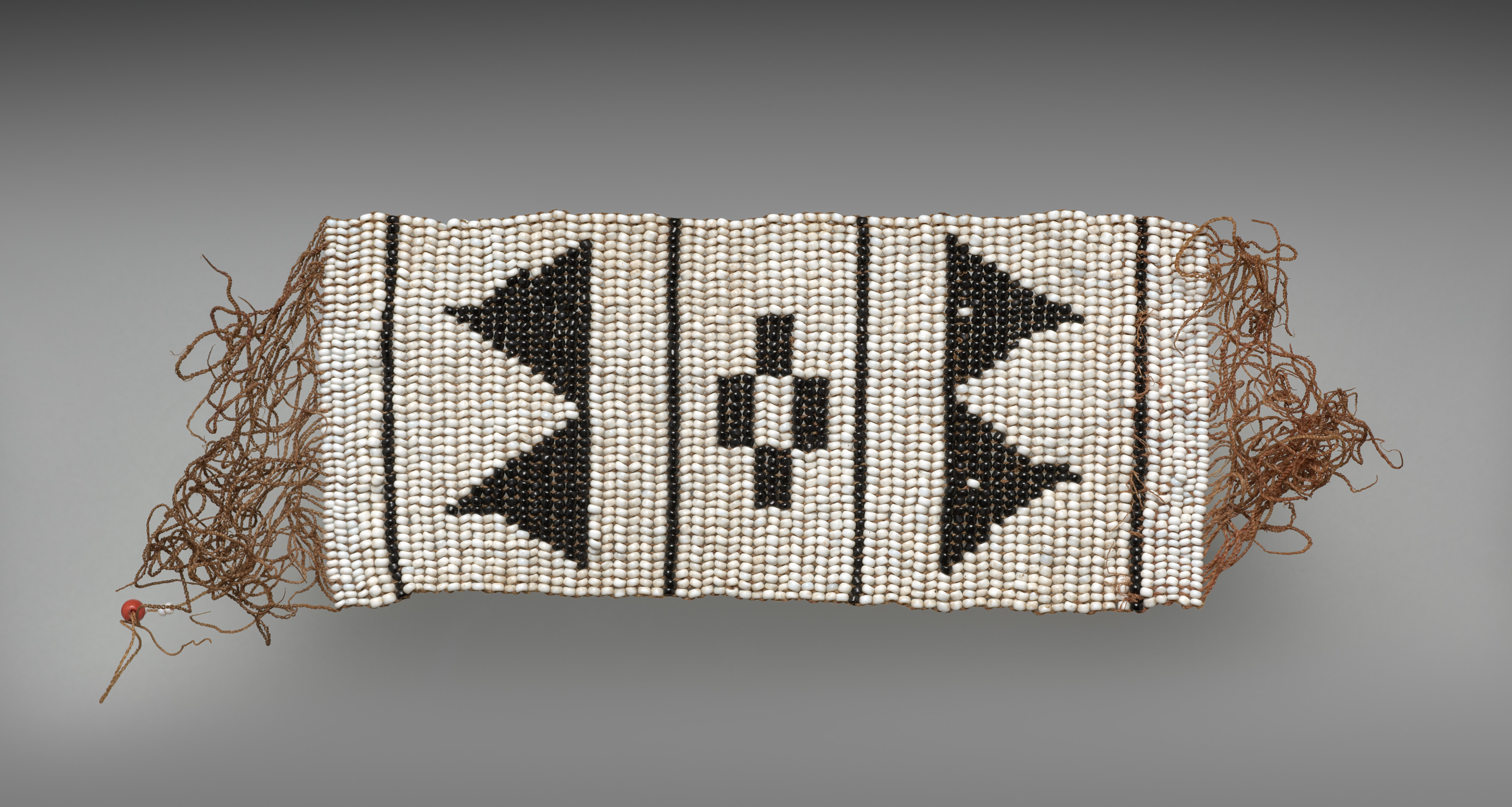The Cleveland Museum of Art
Collection Online as of April 23, 2024

Royal ceremonial beadwork: anklet (izitsaba)
1800s
Overall: 27.9 x 8.9 cm (11 x 3 1/2 in.)
Severance and Greta Millikin Trust 2022.49.e
Location: not on view
Did You Know?
The beads to make an ensemble like this cost several cattle in the early 1800s, an amount most couldn't afford.Description
Elite Xhosa women once wore beaded garments like this on festive occasions. Made almost completely from imported Venetian or Bohemian glass beads, they were overt status symbols. Imported beads functioned as money for the Xhosa between about 1770 and 1829. These garments’ female maker carefully selected beads of the highest quality, uniform in color, shape, and size. Made in the same shape as the pendant, a swallowtail-shaped apron (CMA 2010.206) worn under the skirt completed the ensemble.- ?–by 1986Peter Miller collection, Cape Town, SA, (probably logbook 344 and 345)1986–1990Lionel Finneran and Marion Philips collection, Cape Town, SA/New York, 1986–19901990–1997Philips Collection (by divorce), New York, NY, 1990–19971990–1997Philips Family Collection (Vancouver, BC, or Cape Town, SA, by inheritance)1997–2022(Axis Gallery NY/NJ, sold to the Cleveland Museum of Art)2022–The Cleveland Museum of Art, Cleveland, OH
- Pemberton, John. African Beaded Art: Power and Adornment. Northampton, Mass: Smith College Museum of Art, 2008. pp. 170–172
- {{cite web|title=Royal ceremonial beadwork: anklet (izitsaba)|url=false|author=|year=1800s|access-date=23 April 2024|publisher=Cleveland Museum of Art}}
Source URL:
https://www.clevelandart.org/art/2022.49.e